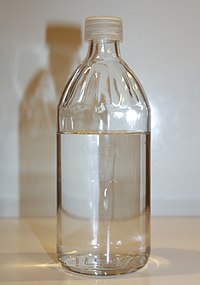
Photo from wikipedia
The experiments on cellulose dissolution/regeneration have made some achievements to some extent, but the mechanism of cellulose regeneration in ionic liquids (ILs) and anti-solvent mixtures remains elusive. In this work,… Click to show full abstract
The experiments on cellulose dissolution/regeneration have made some achievements to some extent, but the mechanism of cellulose regeneration in ionic liquids (ILs) and anti-solvent mixtures remains elusive. In this work, the cellulose regeneration mechanism in different anti-solvents, and at different temperatures and concentrations, has been studied with molecular dynamics (MD) simulations. The IL considered is 1-ethyl-3-methylimidazolium acetate (EmimOAc). In addition, to investigate the microcosmic effects of ILs and anti-solvents, EmimOAc-nH2O (n = 0–6) clusters have been optimized by Density Functional Theory (DFT) calculations. It can be found that water is beneficial to the regeneration of cellulose due to its strong polarity. The interactions between ILs and cellulose will become strong with the increase in temperature. The H-bonds of cellulose chains would increase with the rising concentrations of anti-solvents. The interaction energies between cellulose and the anions of ILs are stronger than that of cations. Furthermore, the anti-solvents possess a strong affinity for ILs, cation–anion pairs are dissociated to form H-bonds with anti-solvents, and the H-bonds between cellulose and ILs are destroyed to promote cellulose regeneration.
Journal Title: Materials
Year Published: 2022
Link to full text (if available)
Share on Social Media: Sign Up to like & get
recommendations!